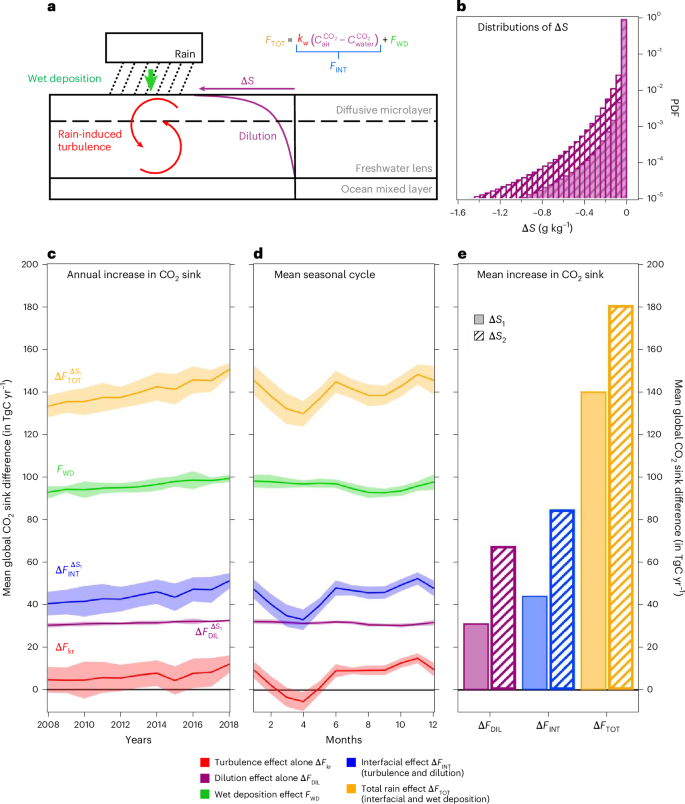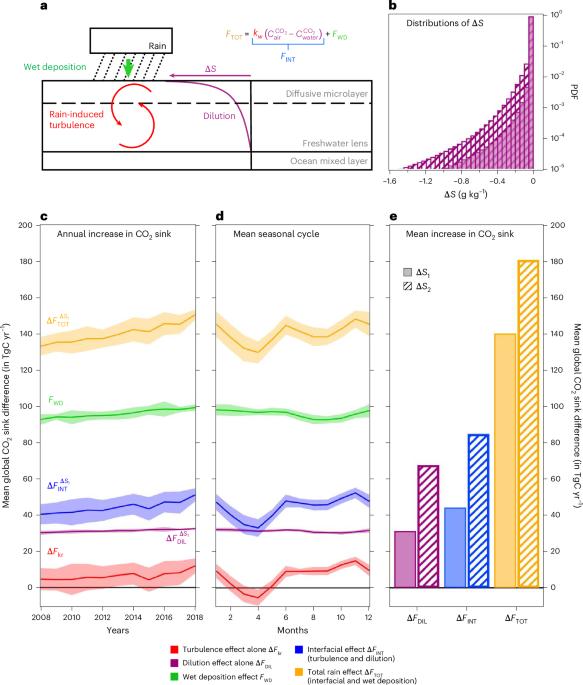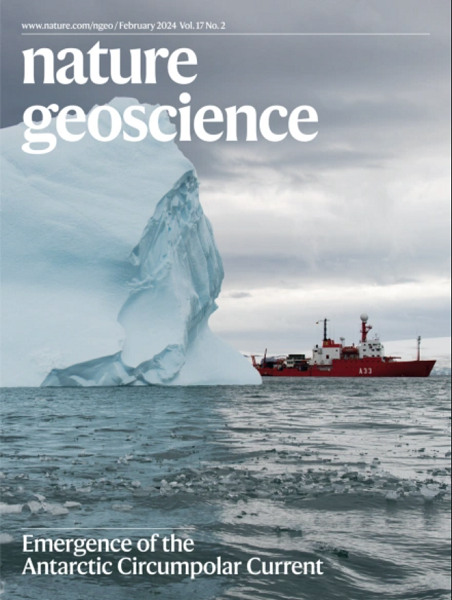Global ocean carbon uptake enhanced by rainfall
IF 16.1
1区 地球科学
Q1 GEOSCIENCES, MULTIDISCIPLINARY
引用次数: 0
Abstract
Rain alters local sea surface physical and biogeochemical properties but its spatiotemporal variability has led to its overlook in global ocean carbon uptake studies. Different physical and chemical processes in the gaseous and liquid phases control the transfer of carbon dioxide (CO2) between the atmosphere and ocean. Rain impacts the interfacial flux by (1) increasing turbulence in the ocean and (2) modulating the air–sea CO2 concentration gradient. Concurrently, raindrops inject CO2 absorbed during their fall into the ocean through wet deposition. Here this study presents a comprehensive estimate of these effects on the global ocean carbon uptake over 2008–2018 based on observational products (satellite and in situ) and reanalysis. Using various representations of the ocean surface response to rainfall and different rain products, we show that rain increases the ocean carbon sink by +0.14–0.19 PgC yr−1 over 2008–2018, representing an increase of 5–7% of the ocean carbon uptake (2.66 PgC yr−1). Rain-induced interfacial flux and wet deposition have comparable orders of magnitude. The former mainly increases the CO2 sink in the tropics because strong rain rates and weak winds induce noticeable salinity and CO2 dilution. The latter is important in the tropics, storm track regions and the Southern Ocean. About 6% of the total uptake of carbon dioxide by the ocean is due to rainfall, according to an analysis of satellite observations and ERA5 reanalysis data from 2008 to 2018.


降雨促进全球海洋碳吸收
降雨会改变局部海面的物理和生物地球化学特性,但其时空变异性使其在全球海洋碳吸收研究中被忽视。气态和液态的不同物理和化学过程控制着大气和海洋之间二氧化碳(CO2)的传输。雨水通过(1)增加海洋湍流和(2)调节海气二氧化碳浓度梯度来影响界面通量。同时,雨滴通过湿沉降将其下落过程中吸收的二氧化碳注入海洋。本研究基于观测产品(卫星和现场)和再分析,全面估算了 2008-2018 年期间这些效应对全球海洋碳吸收的影响。利用降雨对海洋表面响应的各种表示方法和不同的降雨产品,我们表明在 2008-2018 年期间,降雨使海洋碳汇增加了 +0.14-0.19 PgC yr-1,相当于海洋碳吸收量(2.66 PgC yr-1)增加了 5-7%。雨水引起的界面通量和湿沉降的数量级相当。前者主要增加了热带地区的二氧化碳汇,因为强降雨率和弱风会导致明显的盐度和二氧化碳稀释。后者在热带、风暴区和南大洋非常重要。
本文章由计算机程序翻译,如有差异,请以英文原文为准。
求助全文
约1分钟内获得全文
求助全文
来源期刊

Nature Geoscience
地学-地球科学综合
CiteScore
26.70
自引率
1.60%
发文量
187
审稿时长
3.3 months
期刊介绍:
Nature Geoscience is a monthly interdisciplinary journal that gathers top-tier research spanning Earth Sciences and related fields.
The journal covers all geoscience disciplines, including fieldwork, modeling, and theoretical studies.
Topics include atmospheric science, biogeochemistry, climate science, geobiology, geochemistry, geoinformatics, remote sensing, geology, geomagnetism, paleomagnetism, geomorphology, geophysics, glaciology, hydrology, limnology, mineralogy, oceanography, paleontology, paleoclimatology, paleoceanography, petrology, planetary science, seismology, space physics, tectonics, and volcanology.
Nature Geoscience upholds its commitment to publishing significant, high-quality Earth Sciences research through fair, rapid, and rigorous peer review, overseen by a team of full-time professional editors.
 求助内容:
求助内容: 应助结果提醒方式:
应助结果提醒方式:


